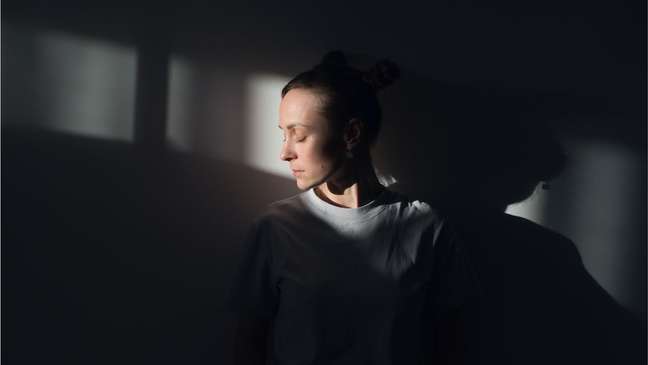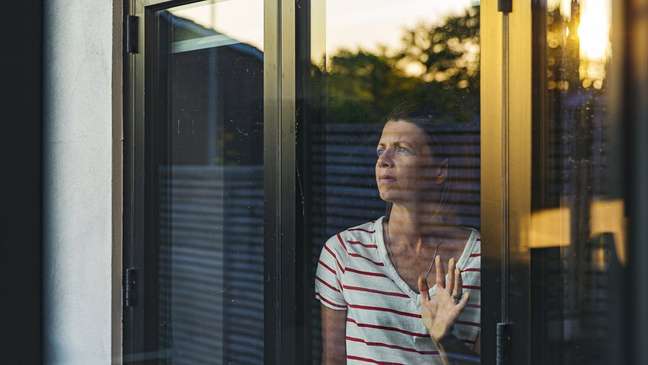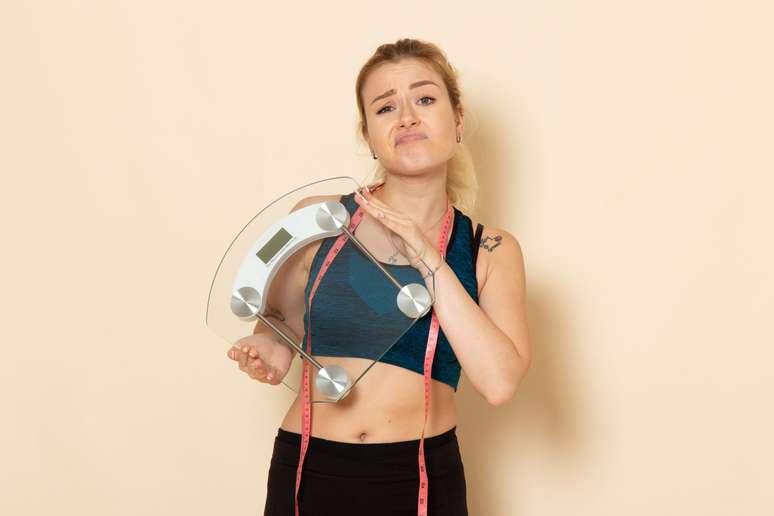A chronic form of depression can appear in childhood or adolescence and affects approximately 6% of the world’s population.

Public worker and communicator Ana Bacovis experienced the first symptoms of dysthymia – or persistent depressive disorder – in her pre-adolescence. At the age of 13 she suffered from low self-esteem, she had relationship problems and began to have a bad outlook on life.
“I considered myself a very realistic person, but I was actually pessimistic. You end up in a situation where you think it’s normal,” he says.
It took some time for her parents to realize that their daughter’s behavior was unusual. Moments of anger and irritability were the indications that led Ana to seek help.
“We have a distorted view of depression, but I had joy points, very high peaks of euphoria, then it was over and the sadness came,” he recalls.
Even with early symptoms of the disorder, she was only diagnosed when she already had more advanced signs of depression. After receiving medical treatment, the young woman learned that she suffered from dysthymia and had a moderate degree of anxiety.
Like Ana, it is very common for many patients to be diagnosed with this type of depression after decades of living with the symptoms. Often the most evident signs are confused with the personality, the “way” of the individual and can be underdiagnosed even by doctors.

“The most common story that occurs is someone who has some form of mild depression or dysthymia, but only when the symptoms of depression become more severe does the patient seek help and discover that they suffer from the disorder,” said Marcelo Heyde, psychiatrist and professor. of the School of Medicine of the Pontifical Catholic University of Paraná (PUCPR).
What is dysthymia?
Persistent depressive disorder is a chronic form of depression and can begin in childhood or adolescence, before the age of 21. According to the World Health Organization (WHO), dysthymia affects about 6% of the world population.
The main difference between her and the classic type is that, in this, the person can be functional and carry out their activities normally. However, working, studying and other daily actions are a little more difficult to do.
“It carries out activities at a higher cost than routine and with reduced productivity due to symptoms. It is functional, but at the cost of greater effort,” explains Márcia Haag, psychiatrist and professor at Universidade Positivo, Curitiba (PR).
According to experts heard by BBC News Brazil, there is still no consensus on what causes dysthymia. Usually, the disorder can be multifactorial and generated by stressors in childhood, genetic and biological predisposition, trauma or social problems.
“It is possible to note that in adulthood it is very common for the patient to arrive crying easily and when he goes to investigate he was a calmer child and had difficulties in relationships”, stresses Bianca Breda, psychologist and specialist in cognitive therapies at the Hospital das Clínicas of the USP School of Medicine (FMUSP).

In Ana’s case, she only discovered the disease through her work in a support center for sexually abused children and adolescents. Having psychological care on site, the young woman could understand what was happening to her.
How to identify and differentiate from the classic type?
Unlike other episodes of depression, which are easier to recognize, dysthymia has its own “camouflage” characteristics.
In addition to the longer duration, the most common signs can manifest themselves through tiredness, fatigue, low self-esteem, indecision and exaggerated pessimism.
In common and more well-known depression, the person tends to exhibit exacerbated symptoms of sadness, discouragement, lack of interest in things, loss of appetite, and other signs that may be noticed by those around and by the patient himself.

“In depression there is a greater intensity, the suffering of a depressed person is usually greater and we classify it as mild, moderate or severe. It is usually linked to some event,” says Breda.
It is not personality
This disorder is considered to be one of the most difficult types of depression to diagnose and is often confused as “personality”.
Due to this common misconception, diagnosis becomes delayed and harms patients in their search for the correct treatment, which can occur after decades. It is essential, according to experts, to stop saying that a certain person is boring, “cricri”, that she is her and has been like that all her life and, therefore, will never change.
“Dysthymia comes slowly and slowly, however, over the years, despite being mild, the functional impact is great, as the person gets nicknames like grumpy and short-tempered. This is culturally accepted, but delays diagnosis and also reinforces neuroticism. which is a personality trait to see things more negatively, ”explains psychiatrist PUC-PR.
The civil servant, for example, had difficulty relating to school and did not know why. “I’ve always had a lot more insecurity, especially in love, and I’ve been stuck a lot,” he says.
He also believed that all of these feelings were part of his behavior and that, over time, they could pass. But that didn’t happen and mood swings occurred frequently.
“Those who have dysthymia have a very troubled life with themselves. At some point we end up getting irritated,” says Ana.
How to seek help and treat the disorder
It is essential that the patient seek early care to avoid insufficient diagnosis. Often, when there is a specific complaint about another disease, they may not go to the psychiatric service and, in general, receive a diagnosis of another disease and the dysthymia goes unnoticed.

“Depression itself has up to 50% of cases that go undiagnosed by primary care physicians. Imagine the dysthymia that a person may complain of tiredness, fatigue and low self-esteem. It is quite common to associate it with other psychiatric illnesses, anxiety disorders and the use of substances, “says Haag.
Late diagnosis, the doctor strengthens, can also interfere with the onset of other diseases or worsen each of them.
“Dysthymia and depression affect the body systemically and can worsen chronic clinical conditions such as diabetes, hypertension and rheumatological diseases, causing the patient to need higher doses of drugs or a superior combination of drugs to stabilize this condition” , he claims. It’s over there?
Since there is still a taboo in relation to mental health, identifying the disorder can be even more complicated. The recommended thing is to contact psychologists and psychiatrists, who will evaluate the case and will know how to determine the correct line of therapy, which can be done with drugs or only with psychotherapy.
When Ana discovered dysthymia, she continued with psychotherapy and “alternative” therapies, since, due to her age, her psychologist preferred not to prescribe drugs.
For a few years, the public official has stopped therapy sessions, but since the beginning of the covid-19 pandemic in 2020, she has returned with treatment. Since she returned with a psychological follow-up, she has noticed a significant improvement.
Specialists emphasize the importance of not stopping treatment without the authorization of a healthcare professional and that the evolution of the disorder must be constantly observed.
Medical follow-up can last for months or years, but it is essential to improve the patient’s symptoms and quality of life.
– This text was published in https://www.bbc.com/portuguese/geral-62752634
Where to get help?
CAPS and Basic Health Units (family health, places and health centers)
UPA 24 hours
Samu 192
hospitals
Emergency room
CVV – Life Appreciation Center (emotional support and suicide prevention)
188 (toll-free number from any landline or mobile network)
www.cvv.org.br (Chat, Skype or e-mail)
Source: Terra
Benjamin Smith is a fashion journalist and author at Gossipify, known for his coverage of the latest fashion trends and industry insights. He writes about clothing, shoes, accessories, and runway shows, providing in-depth analysis and unique perspectives. He’s respected for his ability to spot emerging designers and trends, and for providing practical fashion advice to readers.





-t84500vauzw7.png)


